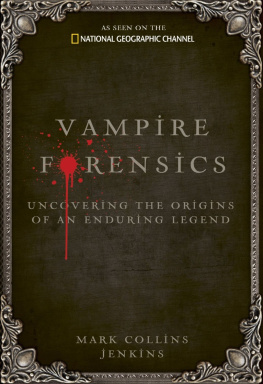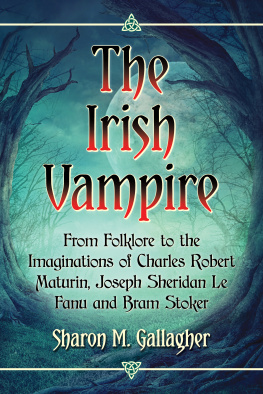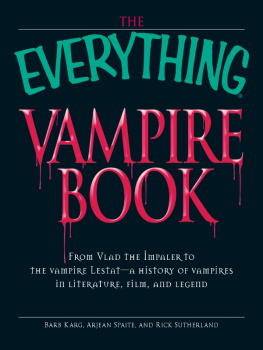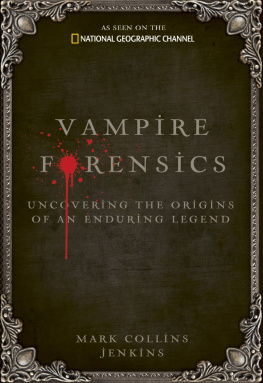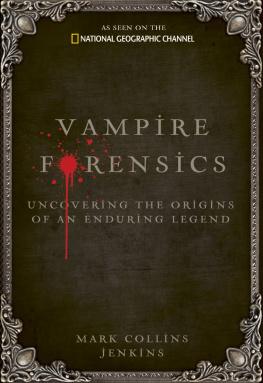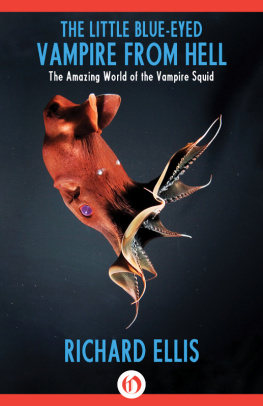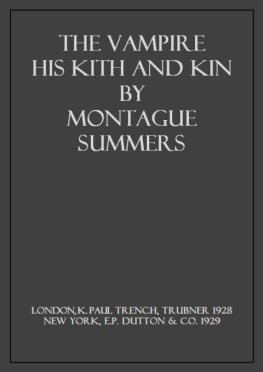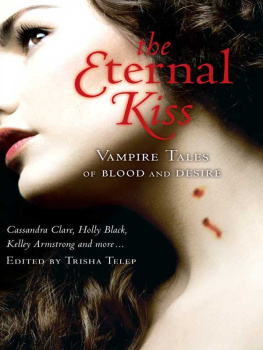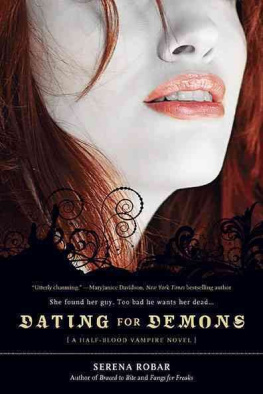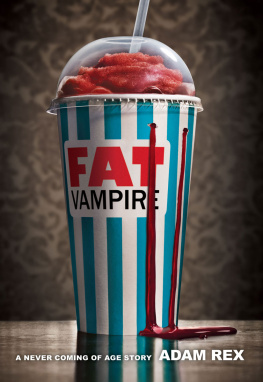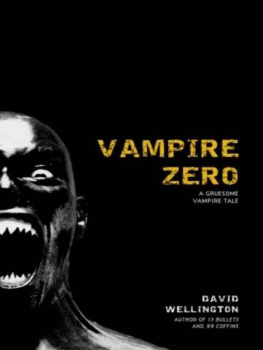VAMPIRE FORENSICS
VAMPIRE FORENSICS
UNCOVERING THE ORIGINS OF AN ENDURING LEGEND
MARK COLLINS JENKINS

Published by the National Geographic Society
1145 17th Street N.W., Washington, D.C. 20036
Copyright 2009 Mark Collins Jenkins. All rights reserved. Reproduction of the whole or any part of the contents without written permission from the publisher is prohibited.
Library of Congress Cataloging-in-Publication Data
Jenkins, Mark, 1960 July 12
Vampire forensics: uncovering the origins of an enduring legend / Mark Collins Jenkins.
p. cm.
Includes bibliographical references.
ISBN: 978-1-4262-0666-5
1. Vampires. 2. Forensic sciences. I. Title.
GR830.V3J44 2010
398.45--dc22
2009044631

The National Geographic Society is one of the worlds largest nonprofit scientific and educational organizations. Founded in 1888 to increase and diffuse geographic knowledge, the Society works to inspire people to care about the planet. It reaches more than 325 million people worldwide each month through its official journal, National Geographic, and other magazines; National Geographic Channel; television documentaries; music; radio; films; books; DVDs; maps; exhibitions; school publishing programs; interactive media; and merchandise. National Geographic has funded more than 9,000 scientific research, conservation and exploration projects and supports an education program combating geographic illiteracy.
For more information, please call 1-800-NGS LINE (647-5463) or write to the following address:
National Geographic Society
1145 17th Street N.W.
Washington, D.C. 20036-4688 U.S.A.
Visit us online at www.nationalgeographic.com
For rights or permissions inquiries, please contact National Geographic Books Subsidiary Rights: ngbookrights@ngs.org
C ONTENTS
A V AMPIRE IN V ENICE , 2006
L A S ERENISSIMA the Most Serene Republicis how we like to think of Venice, as she was during her golden age. The crumbling palaces, arched bridges, and exuberant churches topped by domes and campaniles all rise from that shimmering lagoon like mirages from the past. This is the Venice of our dreams.
And like all dreams, that Venice was an illusion. Today a World Heritage site, the Queen of the Adriatic attracts millions of tourists each year. Yet few of them cross the sparkling waters and visit Lazzaretto Nuovo Island, with its old quarantine station, high-walled hospital, and cemetery heaped with the bones of 16th- and 17th-century plague victims. Life had not always been serene in La Serenissima, as Dr. Matteo Borrini understood only too well. While directing an excavation of that cemetery in 2006, the forensic anthropologist had become puzzled by one broken skeleton in particular. Why, he wondered, had someone four centuries ago thrust a brick between its jaws? His quest for an answer, supported by a 2009 grant from the National Geographic Society, led him to uncover the legend of the chewing dead, plague-causing vampires stopped only by ramming stones or bricks in their mouths.
They are but one of the many species that have arisen from the long, evolving history of vampires. Follow their wandering tracks, and you will wend ever deeper into the nightmarish mazes of our most remote past.
C HAPTER O NE
T WILIGHT Z ONE
Y OU OPEN THE DOOR. There in the gathering twilight he stands, caped and fanged and glowering. In the streets behind him, spectral legions are on the move. Its Halloween, and the visitor on your doorstep must be all of six years old.
Vampire chicits everywhere. Its cool to be one, and certainly cool to love one, judging from the popularity of a certain number-one best seller that ends with the heroine wishing to become a vampire like her boyfriend. Now that theyve come out of the coffin, so to speak, vampires have never appeared more sensitive or romantic. They have never been more heroic. And they have never been portrayed more sympathetically. One is wickedly reminded of something Dr. Lewis Thomas once wrote about biological parasites: [T]here is nothing to be gained, in an evolutionary sense, by the capacity to cause illness and death. Pathogenicity may be somethingmore frightening to them than us.
American popular culture is in the midst of a vampire epidemic that has sunk its fangs into fashion, film, television, and publishing. Vampire trappingspallid complexions, eyeliner, dark clothinghave outgrown their origins in the Goth look and crossed into the mainstream. The vampire is the new James Dean, no less a cultural arbiter than the New York Times pronounced on July 2, 2009. And on Sunday nights, admittedly after the family hour, millions of television viewers curl up for the latest installment of vampire mayhem set in the bayous of Louisiana as HBO broadcasts its decidedly Grand Guignol series, True Blood.
Its all irresistibly good fun. As folklorist Michael Bell once put it, What better food for the imagination than a creature that incorporates sex, blood, violence, shape-shifting, superhuman power, and eternal life?
Yet it is also a bewildering maze, a hall of mirrors in whichas, upon reflection, youd expectthe original vampire is hard to see. Take Dracula: You cant find the porter for the baggage. As the Irish Times related when the novel of that name, written by its native son, was selected as the Dublin: One City, One Book choice for 2009:
Hes advertised throat lozenges, cat food, insecticide, pizza, security systems (protects you against uninvited guests), and many other products. He has been a breakfast cerealChoculas. In the 170-odd movies in which Dracula was featured as a main or lesser character, he has been black ( Blacula , 1972), deaf ( Deafula , 1975, the first-ever signed film), gay ( Dragula , 1973), a porn star ( Spermula , 1976), and senile (John Carradine keeping his teeth in a glass by the side of the bed in Nocturna , 1978). He has met Billy the Kid, Abbott and Costello, the Hardy Boys and Nancy Drew, and the Outer Space Chicks.
Nor can we forget Bunnicula, the vampire rabbit who sucks plant juices, and Vampirella, the redoubtable comic-book heroine of the planet Draculon, where all the rivers once ran with blood. Dracula himself, in altered form, has even had his own comic-book adventures: Marvels Tomb of Dracula and Dracula Lives turned the Transylvanian count into a kind of reverse superhero, impossible to kill or to keep down; at one point in his Marvel-ous escapades, the cartoon Dracula marshals a vampire army on the moon and launches his minions like missiles at Earthall the while sporting his trademark evening clothes and cape.
At least there he was recognizably evil. In Fred Saberhagens novel The Dracula Tape, he is not only more sinned against than sinning; hes not even guilty. The death and damage the main character wreaks in the original novel is instead laid at Abraham Van Helsings feet; in Saberhagens sympathetic reimagining, the stubborn vampire slayer is so deluded by superstition that he, not Dracula, leaves a trail of disaster behind him.
The vampire also enjoys a special prestige in the pantheon of ghouls. Given the choice, says Peter Nicholls, editor of the Encyclopedia of Science Fiction, its better to be a vampire than a werewolf or a zombie:
Vampires are aristocratic, drinking only the most refined substances, usually blood. In the iconography of horror, the vampire stands for sex. The werewolf, who stands for instability, shapeshifting, lack of self-control, is middle-class and lives in a dog-eat-dog world. The zombie or ghoul, who shambles and rots, is working-class, inarticulate, dangerous, deprived, wishing only to feed on those who are better off; in the iconography of horror the zombie stands for the exploited worker.
Next page
